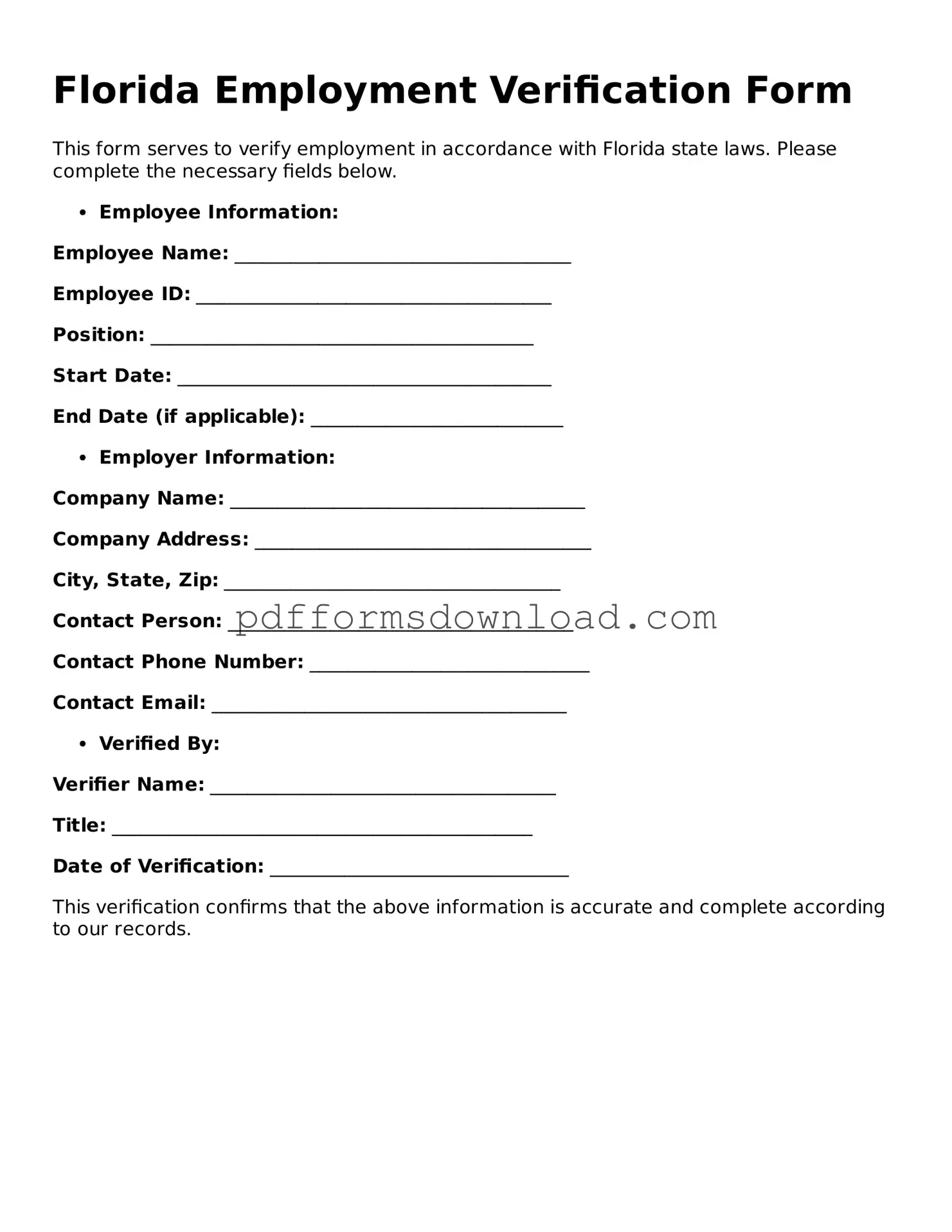What is the Florida Employment Verification form?
The Florida Employment Verification form is a document used to confirm an individual's employment status. This form is often required by various entities, such as lenders, government agencies, or potential employers, to verify that a person is currently employed or was employed in the past. It helps establish a person's income and job stability.
Who needs to fill out the Employment Verification form?
Typically, employers are responsible for completing the Employment Verification form. However, employees may need to request it when applying for loans, rental agreements, or other situations where proof of employment is necessary. It’s important for both parties to ensure the information is accurate and up-to-date.
What information is included in the Employment Verification form?
The form generally includes details such as the employee's name, job title, dates of employment, salary or hourly wage, and the employer's contact information. Some forms may also ask for additional information, like the employee's work hours or performance evaluations, depending on the requester's needs.
How does one obtain the Employment Verification form?
Is there a fee for completing the Employment Verification form?
What if the employer refuses to complete the form?
If an employer refuses to complete the Employment Verification form, the employee can first inquire about the reason for the refusal. Sometimes, it may be due to company policy or privacy concerns. If necessary, employees may need to seek alternative methods of verification, such as providing pay stubs or tax documents.
Can the Employment Verification form be used for self-employment?
How long does it take to process the Employment Verification form?
Are there any legal requirements regarding the Employment Verification form?
